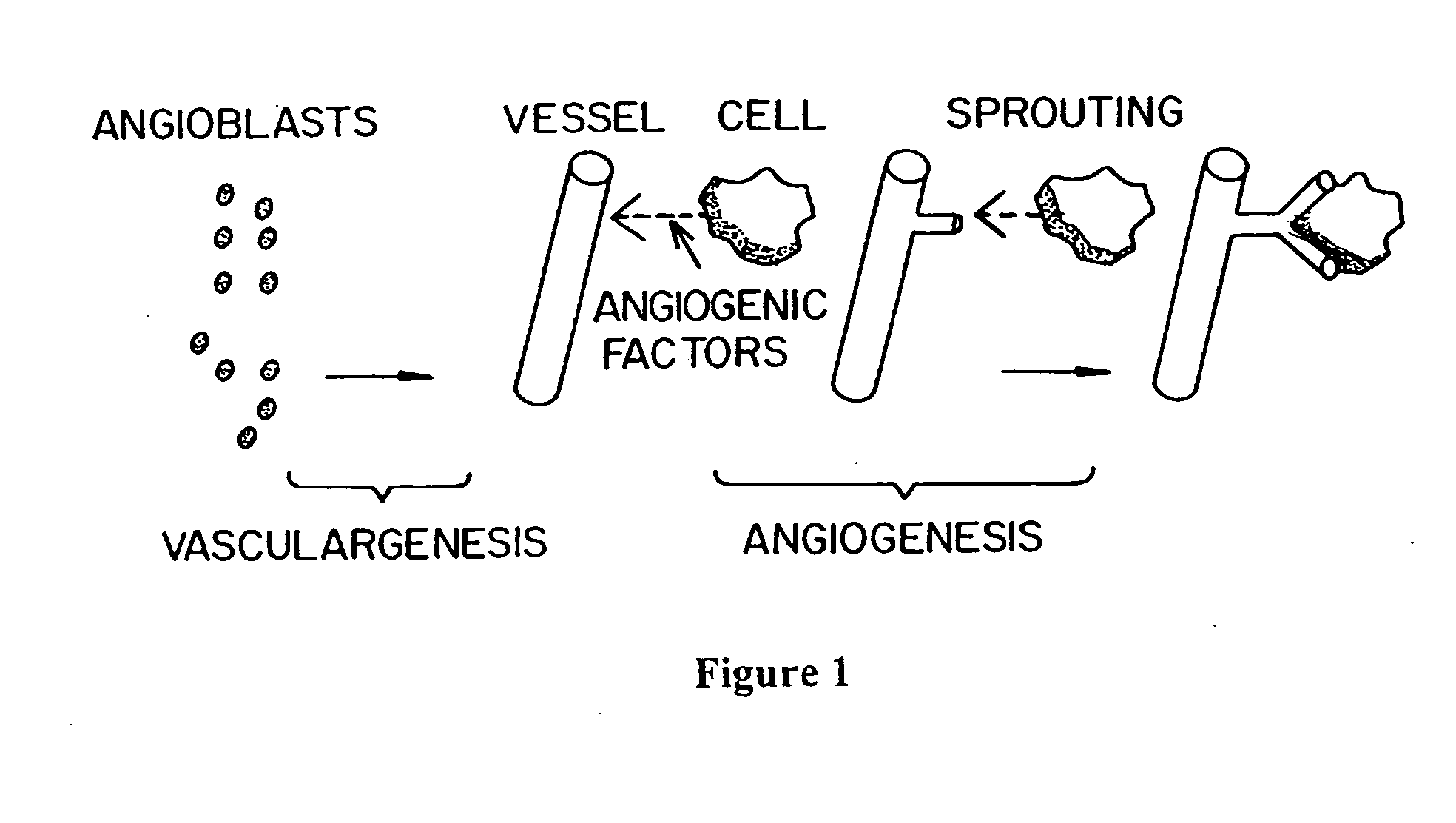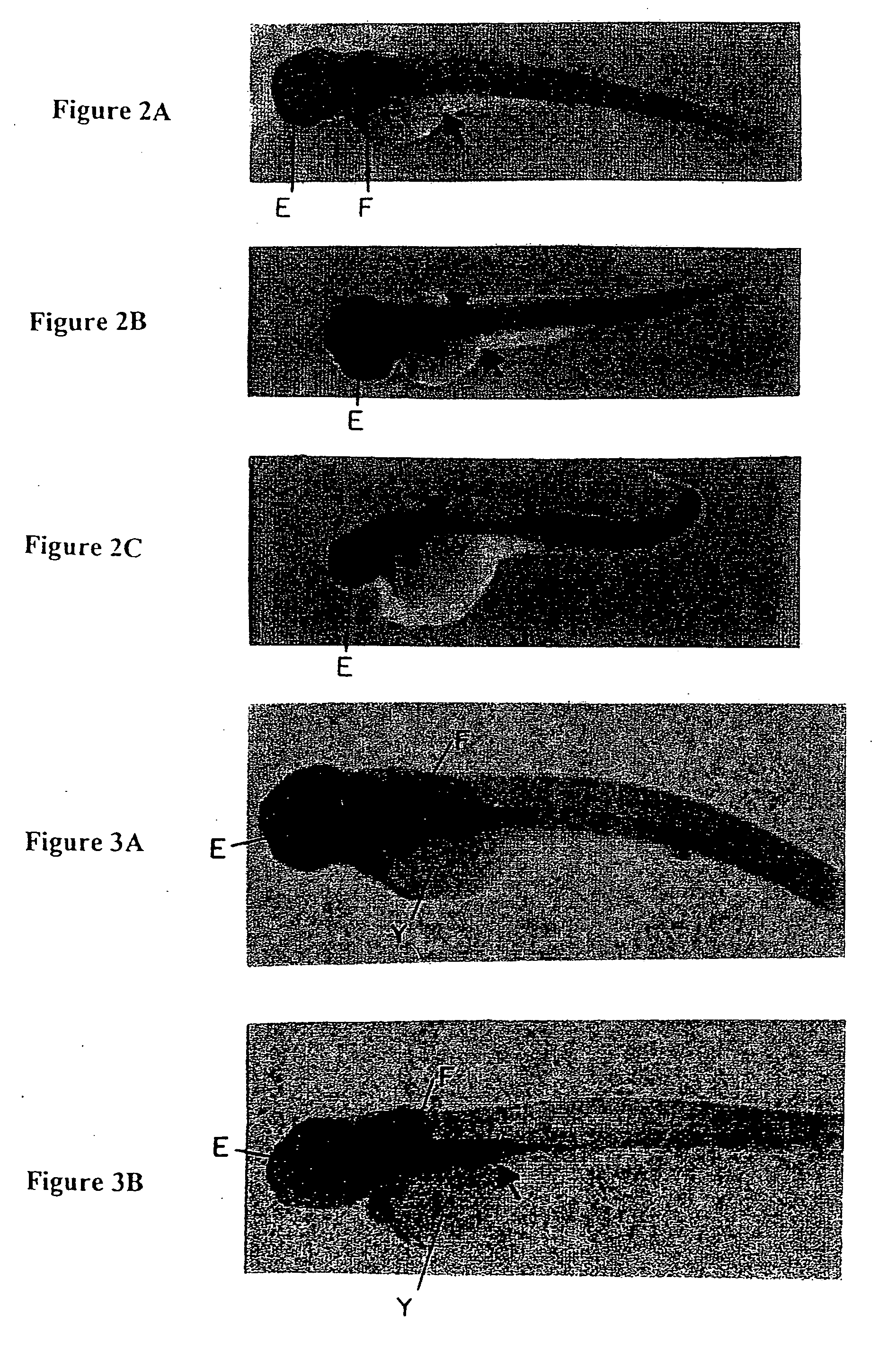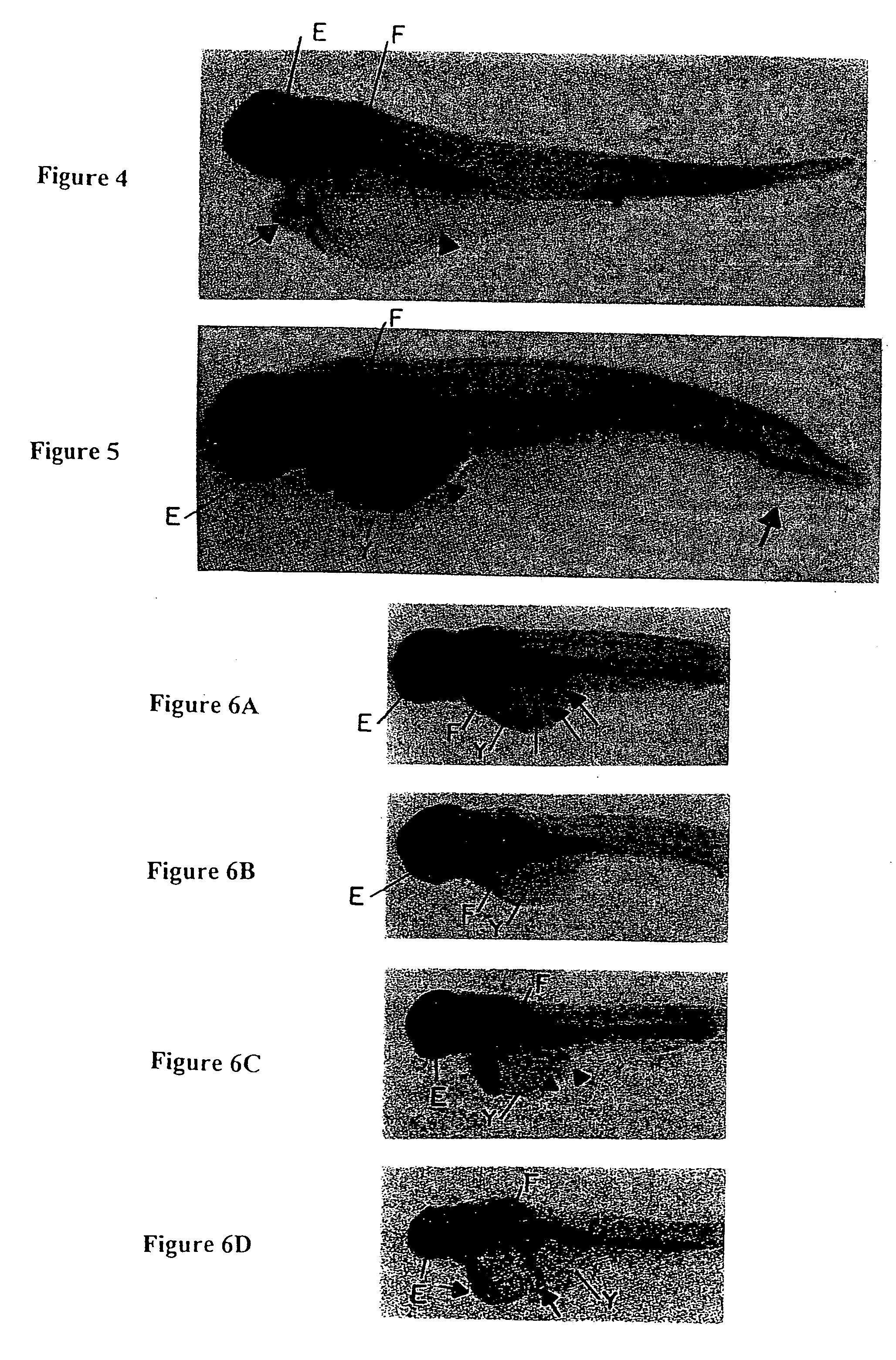Methods of screening agents for activity using teleosts
a screening agent and teleost technology, applied in the field of screening agents for activity using teleosts, can solve the problem of increasing cell death activity and the response is not good enough
- Summary
- Abstract
- Description
- Claims
- Application Information
AI Technical Summary
Problems solved by technology
Method used
Image
Examples
examples
[0508] As provided hereinabove in Sections II, III and IV, several compounds were screened for in vivo activity in the brain or CNS of zebrafish embryos, cultured under standard conditions, at various times post-fertilization. The results are summarized below in which the compounds tested are classified according to the knowledge, at the time of testing, of their ability to transit the BBB.
[0509] 1. Compounds Known to Transit the Blood Brain Barrier
[0510] As shown in Table 7 below, several compound known in the art to transit the BBB in mammaliam organisms were tested for, and demonstrated, biological activity in the brain or CNS of zebrafish embryos cultured under standard conditions when administered for various periods of time, including prior to 3 days post-fertilization or after at least 3 days post-fertilization.
[0511] 2. Compounds Known not to Transit the Blood Brain Barrier
[0512] As shown in Table 7 below, several compound known in the art not to transit the BBB in mamma...
example
[0572] 1. Effect of N-acetyl-L-aspartyl-L-glutamate (NAAG) on Blood Brain Barrier Permeability in Zebrafish
[0573] 4 day zebrafish embryos cultured under standard conditions as described above were used to examine effects of N-acetyl-L-aspartyl-L-glutamate (NAAG), an agonist at group II metabotropic and NR1 / NR2D-containing N-methyl-D-aspartate (NMDA) ionotropic glutamate receptors, on BBB integrity. Rhodamine 123 was injected to the tail veins to detected BBB integrity. In control zebrafish, Rohdamine 123 was observed in the blood vessels at 15 min and 4 hours after injection indicating a functioning BBB system (FIG. 28, left panels). In contrast, Rhodamine 123 was observed in brain tissue 4 hours after injection, indicating increased BBB permeability in response to NAAG (FIG. 28, right panels). This data further demonstrates that zebrafish embryos are useful for screening agents for their ability to affect BBB permeability in vivo.
PUM
| Property | Measurement | Unit |
|---|---|---|
| volumes | aaaaa | aaaaa |
| pH | aaaaa | aaaaa |
| pH | aaaaa | aaaaa |
Abstract
Description
Claims
Application Information
 Login to View More
Login to View More - R&D
- Intellectual Property
- Life Sciences
- Materials
- Tech Scout
- Unparalleled Data Quality
- Higher Quality Content
- 60% Fewer Hallucinations
Browse by: Latest US Patents, China's latest patents, Technical Efficacy Thesaurus, Application Domain, Technology Topic, Popular Technical Reports.
© 2025 PatSnap. All rights reserved.Legal|Privacy policy|Modern Slavery Act Transparency Statement|Sitemap|About US| Contact US: help@patsnap.com



